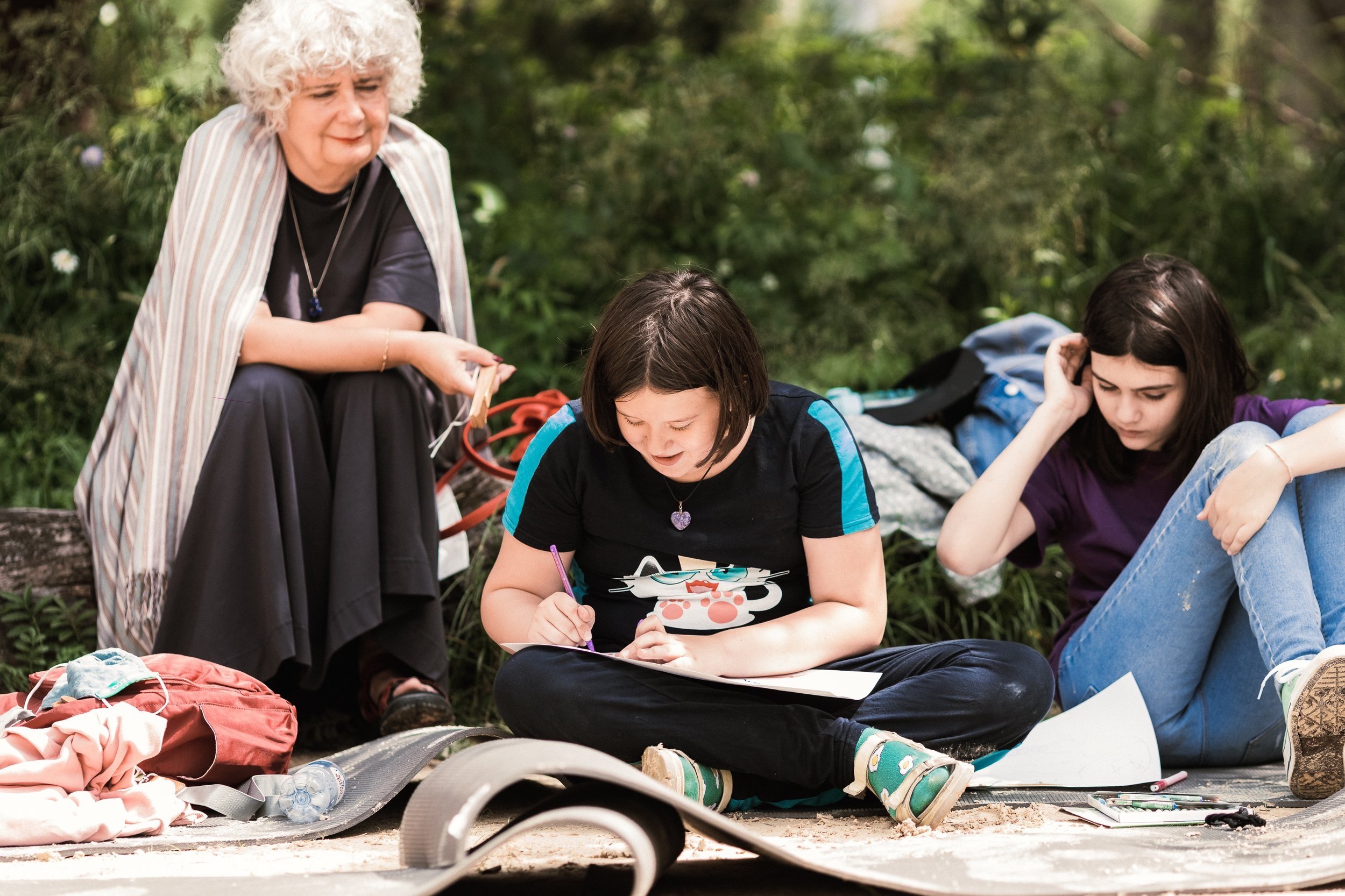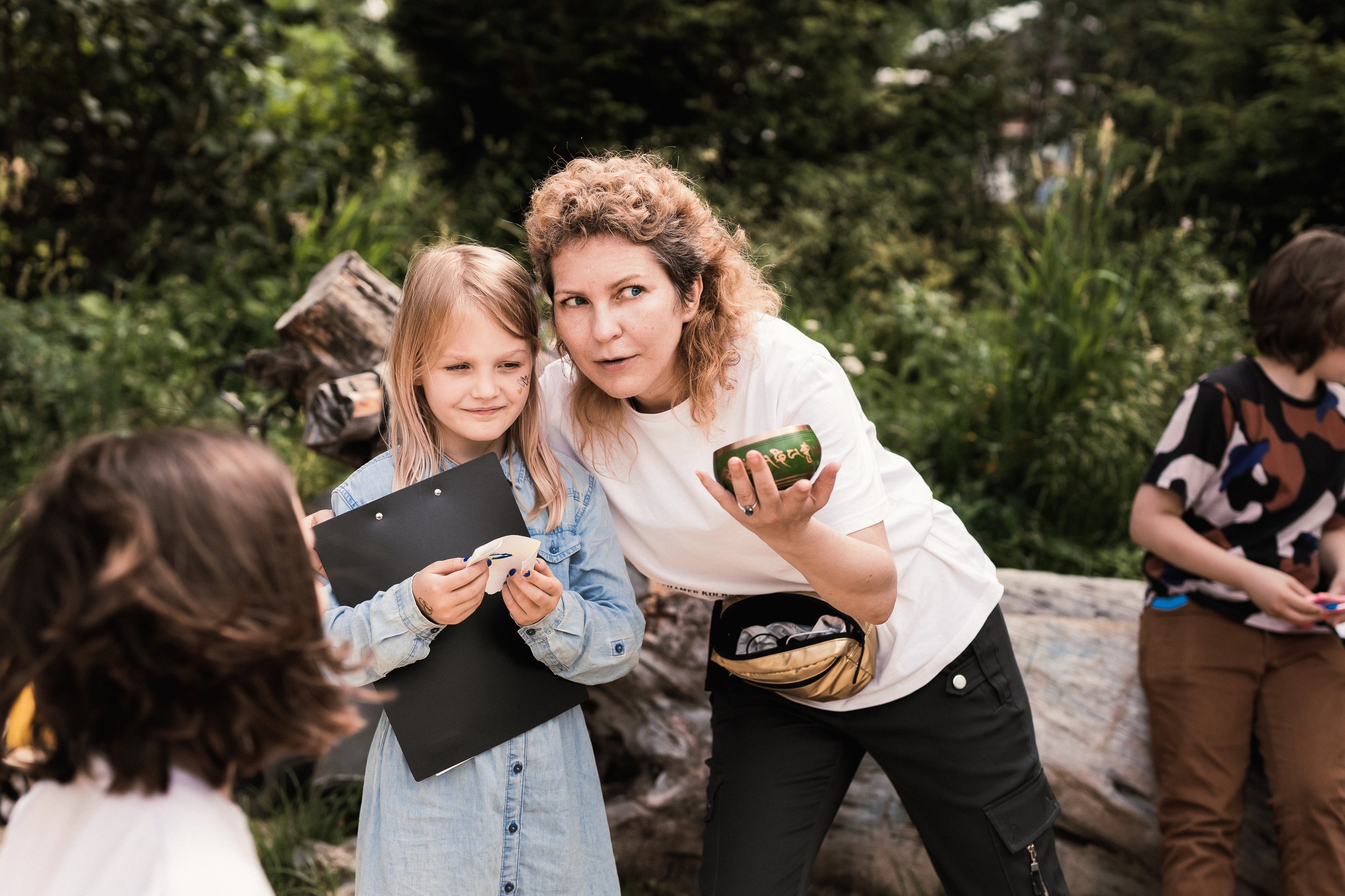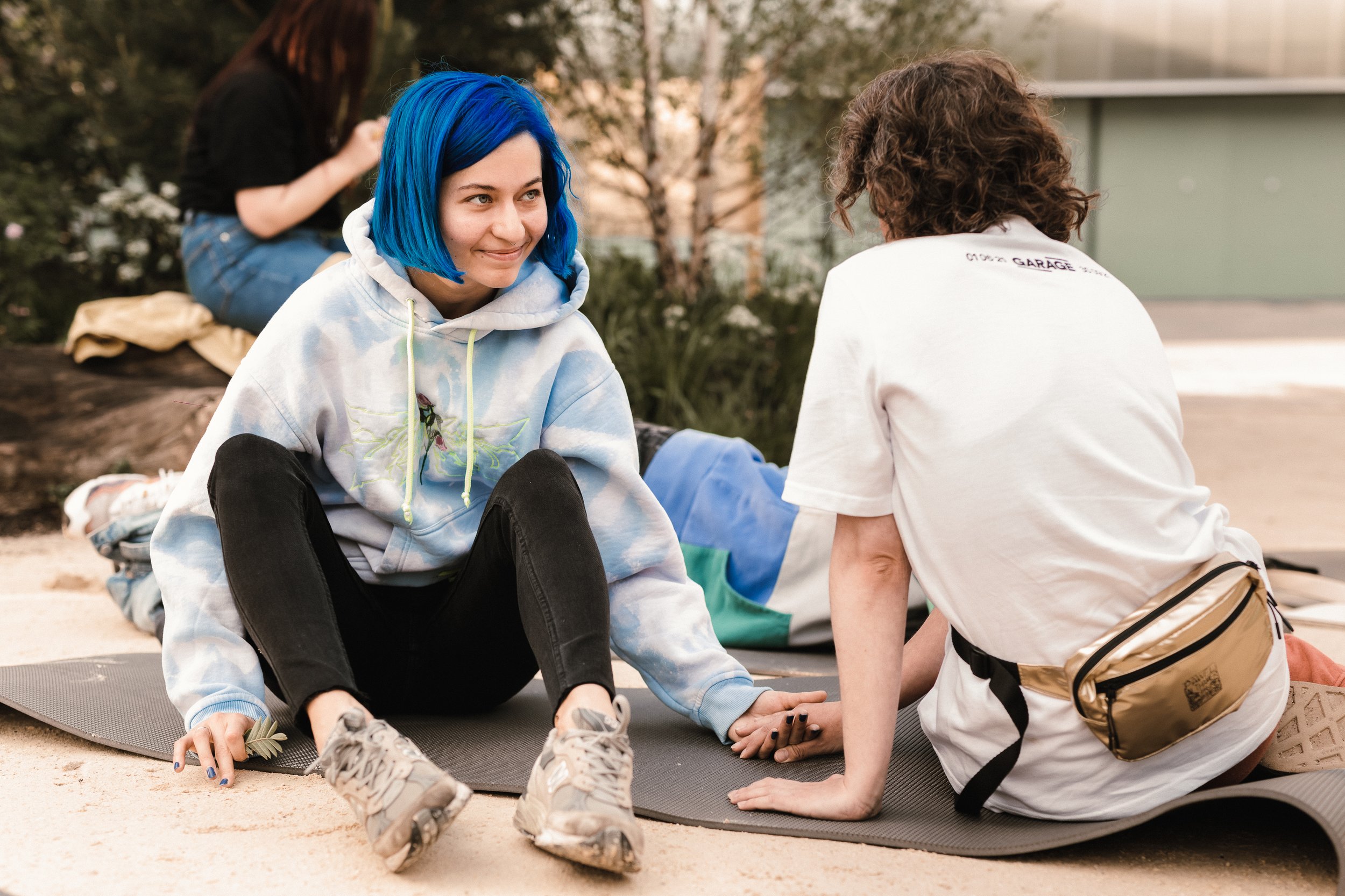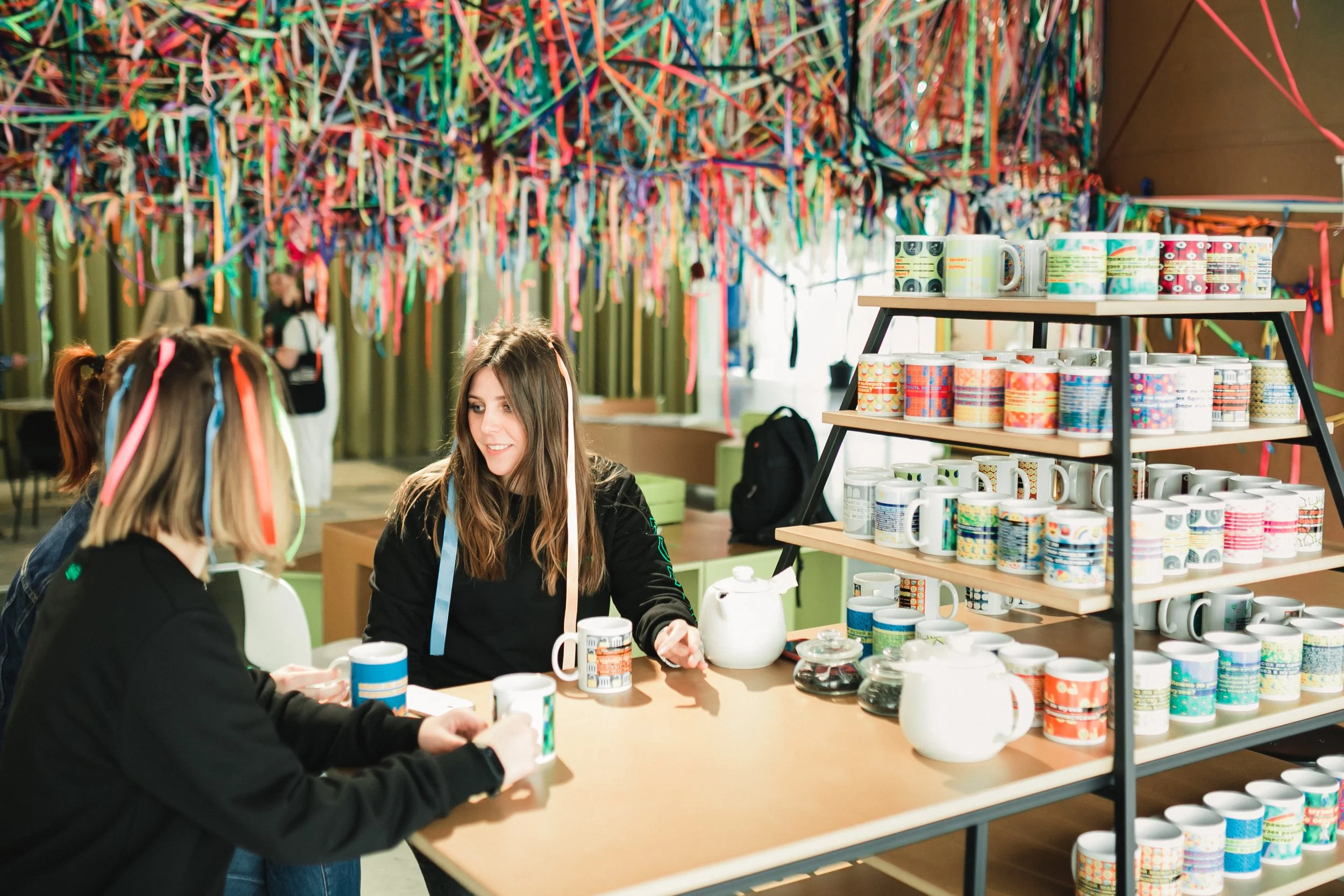Marina Romanova, Public Programs Manager in the Education Department of Garage Museum of Contemporary Art
Art mediation is being increasingly embraced by many museums and galleries, biennales, and art fairs. A mediator is an enthusiast with an equal interest in art and in willingness to share her/his knowledge: namely, to be an intermediary between the museum space and the visitor. In Russia, the format of art mediation has been gathering pace among Russian cultural institutions since 2014.
We talked to Marina Romanova, a young professional who pioneers the mediation programs in one of the most significant museums of contemporary art in Russia. As Public Programs Manager in the Education Department of Garage Museum of Contemporary Art, Marina was able to share with us insights about the specifics of the mediator's work, the obstacles and difficulties which mediators face, and the future that she sees for mediation programs in Russia.
Tell us about mediation in the museum. What is it and why do cultural institutions need it today?
The art mediation programs are numerous in today's Russia. They are implemented on a temporary or permanent basis in museums, biennales, cultural centres, art fairs, and galleries. It seems we see a revival of interest in this direction, which, of course, makes me glad!
The ultimate goals of state museums and commercial galleries are different when we talk about mediation. One looks for high attendance, the number of tickets sold, guided tours, press coverage metrics, and the other needs high sales figures and attention from new sponsors and influencers. But the intermediate goal converges for everyone: to make the visitor's experience more comfortable and memorable. It is essential to note that when I talk about comfort, I do not mean flattery or appeasement. The point is that the very figure of the mediator always implies dialogue, horizontality, and freedom. And these qualities are likable and attract people, making the visitor's experience memorable for a long time.
Mediation Program at Garage Museum. Photo by Anton Donikov © Garage Museum of Contemporary Art
Tell us about art mediation in Garage
Garage does not have a permanent mediation program or a fixed staff position related to mediation. Mediation projects happen on a project basis, around once a year. Currently I work as Public Programs Manager in the Education Department. But I always was fond of participatory formats and working with communities - I worked as a guide for two and a half years in Garage. Therefore during programme planning and allocation, the mediation projects are often on me.
Today I initiate similar programs in Garage in collaboration with other museums and online, too. For example, from November 3 to December 1 2021, once a week, together with The Ural Industrial Biennial of Contemporary Art, we conduct online seminars on art mediation, and, in spring 2022, we finally will release the cult book of Carmen Mörsch - "Time for Cultural Mediation" in Russian. These things make me very happy and encourage my professional development in the mediation field.
Mediation in Garage is not always 'classic', that is to say, built on verbal dialogue. It can be a performative practice: working with the voice or meditation format. At the same time, there is still an interaction with the visitor, who transforms from a passive observer to a participant, and who begins to feel his involvement and embeddedness in the process. For me, this part is always crucial in mediation. In general, we like to experiment with formats: mediators can record podcasts, conduct live broadcasts or mediation via Zoom, for example.
In the middle of the pandemic, Garage launched an online mediation related to the exhibition 'Sekretiki: Digging Up Soviet Underground Culture, 1966–1985'. Based on your experience, is there a significant difference between online mediation and offline mediation?
The difference between online and offline mediation is enormous. It is easier to keep in touch with a person in real life - there is no substitute for driving energy in online communication. Also, online we are in contact with fewer people than in real life. We tried to take no more than six people to one online session, otherwise, it could turn into a lecture: the mediator speaks, others listen. But this experience as a trial to transfer mediation into an online format was quite successful for us.
We worked hard, and for a long time: sessions were held four times a day, four days a week for three months. It was a colossal effort, but we learned excellent lessons and irreplaceable experiences from it. I analyzed this experience in detail in a scientific article, so if someone is interested in a detailed analysis of online mediation, you are welcome (Note: the article is in Russian)
What is key in building a dialogue with visitors through mediation?
Mediation Program at Garage Museum. Photo by Anton Donikov © Garage Museum of Contemporary Art
In my opinion, the most important thing for a mediator and a person engaged in communication processes is to love people. Without this quality, nothing will work. I know a lot of smart and educated people with a glib tongue for whom a real conversation with visitors turns out to be a traumatic experience. It is a common thing - professionals stay in their closed, more comfortable professional circle, constantly use artistic or academic terms, and understand by default what historical period, exhibition, or artist they are talking about. This knowledge layer is unreadable to real visitors, and communication should be clear and not overwhelming. Clean, understandable speech is a muscle that can and should be trained, but the mediator should have a love for people from the very beginning.
Why did you start working on mediation programs? What attracts you the most?
As I mentioned earlier, I initially worked in the field and conducted guide tours and masterclasses. I have a background in political journalism, I graduated from the Faculty of Media Communications (Higher School of Economics). So, I am not a professional art critic or curator. It seems to me that these factors allowed me to see how much the art world is closed and distant from real people. I wanted to become the very mediator with whom people - without being ashamed of their ignorance and lack of knowledge - may discuss art or any other thing.
When I learned about art mediation direction, I immediately began to dive into it, and I am still developing as a professional. For example, currently, I am working on my Master's thesis in art mediation at Russian State University for the Humanities and taking a Business Communication course at Yandex Practicum. Last year I graduated from the Mediation School at The Ural Industrial Biennial of Contemporary Art. It is essential for me constantly learn new skills. I am always looking for a challenging professional development program. I believe that a true professional never stands still, and is also always ready to share his best practices and experience because we all do the same thing one way or another.
Which difficulties did you face when launching programs / at the research stage / maybe in another area?
As with any project, there are difficulties in art meditation. Firstly, there is no single canon of "correct" art mediation, which, on the one hand, allows experimentation, but on the other hand, we can see a lot of supposed mediators in various projects, but in fact, they are not. The blurring of these lines is one of the difficulties for me.
Secondly, each mediation project is different from the previous one. For example, at one exhibition project, the curator, artist, exhibition manager are super open to ideas and we get a very lively cooperation process, where we hear and listen to each other, and where we are together responsible for the joint result. On another project, the team can immediately come and say - there will be only one single scenario and that's it. I am glad that so far there are many more positive cases than ones like this.
Tell us about the audience. How many visitors are usually involved in mediation programs?
A lot of different people get involved in mediation programmes- starting from professionals to people who came to the museum for the very first time. Mediation programs are becoming well-spread all over Russia, so many people have heard about this format.
We always keep statistics on projects: how many people have registered, how many have visited the event, for example. But all these metrics are quantitative. Unfortunately, there is no way to measure quality and the outcomes. For example, if during the whole day of mediation, just one person gets the revelation that all art exists for a reason, and a variety of ideas and messages are encoded in it. Is it a lot or a little? There is also a chance that this person won't tell others about this revelation. The elusiveness of such matters, for me, is also an omission. We always ask people to share their emotions and opinions after the sessions but is an inexpressible subject possible to express?
In my opinion, the most important thing for a mediator and a person engaged in communication processes is to love people.



Mediation Program at Garage Museum. Photo by Anton Donikov © Garage Museum of Contemporary Art
What future do you see for mediation programs?
By art mediation, first of all, I mean the art of a free discussion, so I hope with all my might for the brightest future of mediation in Russia and abroad. After all, professional conversation teaches us critical thinking, and the more critical we are about what is happening around us, the more demanding we are becoming. And it inevitably entails changes for the better. Radical pedagogy is fruitful: a critical civil society that cares about the fate of families and the country. And if this is not a bright future, why do I sometimes work seven days a week!
My very last and traditional question is not about mediation. What do you think the Russian art market lacks today?
It seems to me that the art market lacks transparency. We keep silent about our discontent, the unfair distribution of funds and resources, the payment of salaries, and gaslighting by individual representatives of the art world. Cultural workers should not be afraid to stand up for their rights, and in my environment, I see very inspiring examples of people who stand up for their truth day by day. If a person fulfils his duties, he is entitled to demand the fulfilment of his rights.
Follow the Marina on her Instagram
Follow Garage on their Website, Facebook, Instagram, and YouTube.






